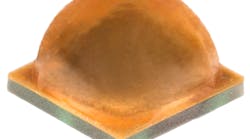In the opening Plenary Session at the Strategies in Light (SIL) conference, Cree senior vice president Norbert Hiller said that the company had achieved a new efficacy high of 276 lm/W in its R&D laboratory. In his keynote address, Hiller also discussed the state of solid-state lighting (SSL) adoption and challenges that the industry must still overcome.
The 276 lm/W LED Cree has tested in the lab eclipses their previously announced high of 254 lm/W announced last April. When pressed for details Hiller said the demonstration was based on an LED with CCT in the 4000K range. Moreover, he said the LED was operated at 350 mA of drive current.
The lab demo did use the epitaxial technology that underlies the third-generation silicon-carbide-based manufacturing platform that Cree calls SC3 (SC cubed). Back in April, Cree had said that elements of the SC3 technology enabled the 254-lm/W demonstration.
Cree has an established track record bringing LEDs to market within 2-3 years of lab announcements such as the one made at SIL. Back in December, Cree announced the 186-lm/W XM-L2 single-die LED and the 200-lm/W four-die MK-R LED that were based on technology used in lab demonstrations announced in December 2009 and February 2010 respectively.
The SSL market
About the SSL market, Hiller said that no one now questions whether LEDs can become predominant. He said "It's only a question of when and how."
He said that SSL product designs still need to better leverage the LED light source. Too many products still look like legacy products. He said a full efficiency advantage requires fixtures that are optimized for LEDs.
Hiller said that it was very encouraging to see that the LED industry in general grew even during the recent downturn, and period of oversupply in terms of packaged LEDs. In fairness, however, we note that Cree and others had some tough financial quarters.
About the LED manufacturing segment, Hiller said "lumens per wafer will determine the technology winner." He added that the statement implied the LED manufacturers with the best epitaxial technology.




